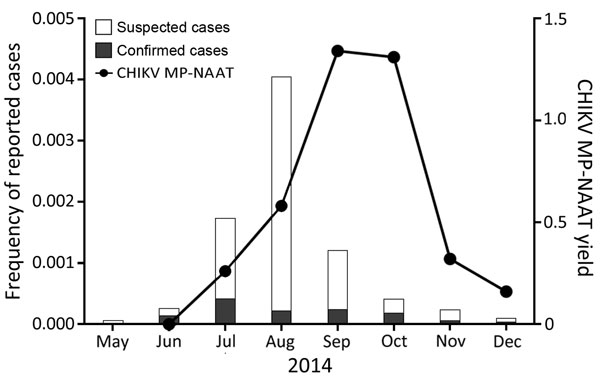Volume 22, Number 7—July 2016
Research
High Incidence of Chikungunya Virus and Frequency of Viremic Blood Donations during Epidemic, Puerto Rico, USA, 2014
Figure 1

Figure 1. Estimated percentage of blood donations positive for chikungunya virus (CHIKV) RNA during a chikungunya epidemic, Puerto Rico, USA, 2014. CHIKV RNA-positive minipools of 16 donors were used to estimate the percentage of positive donations for the last 7 months of 2014. Estimates were made by using an algorithm for calculating infection rates from pooled data. Data from the Puerto Rico Department of Health for reported (suspected) and confirmed chikungunya case reports was used to transform data into estimated frequency of reported cases in a population in Puerto Rico of ≈3,548,400. MP-NAAT, minipool nucleic acid amplification testing.
Page created: June 14, 2016
Page updated: June 14, 2016
Page reviewed: June 14, 2016
The conclusions, findings, and opinions expressed by authors contributing to this journal do not necessarily reflect the official position of the U.S. Department of Health and Human Services, the Public Health Service, the Centers for Disease Control and Prevention, or the authors' affiliated institutions. Use of trade names is for identification only and does not imply endorsement by any of the groups named above.